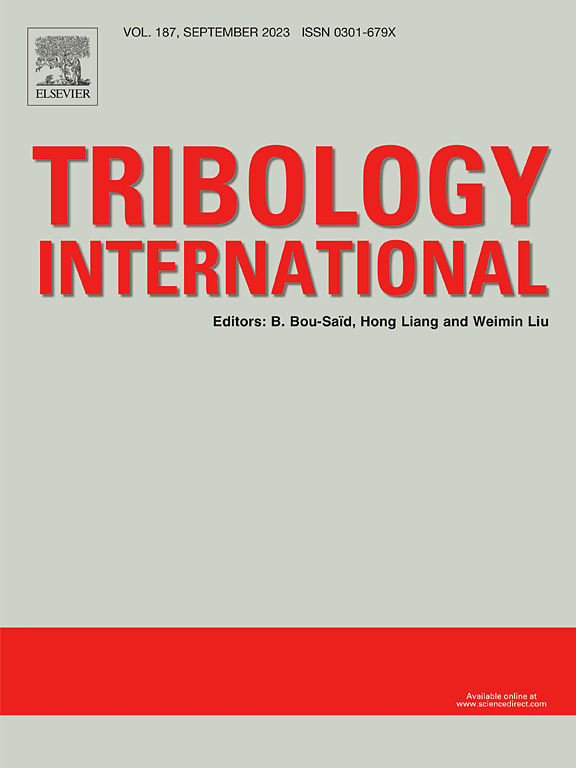Hybrid high-temperature wear mechanisms of additive manufactured Ti-6Al-4V alloy
IF 6.1
1区 工程技术
Q1 ENGINEERING, MECHANICAL
引用次数: 0
Abstract
This study investigates the high-temperature wear of additive-manufactured Ti6Al4V alloy against GH2132. The wear mechanism transitioned from abrasive and adhesive wear to oxidative wear with rising temperatures. The microstructure characteristics reveal the special hybrid high-temperature wear mechanisms: shear deformation-induced wear hardening and dynamic recrystallization-induced wear softening. At lower temperatures, the thinner oxide layer was easily removed and the worn surface in contact underwent work hardening, reducing the negative effects of thermal softening. At higher temperatures, the thicker oxide layer slightly reduced adhesive of the substrate but failed due to cracking and spalling. Combined with intensified thermal softening, recrystallization softening on the worn surface not only eliminated surface hardening but led to a sharp decline in wear resistance.
求助全文
约1分钟内获得全文
求助全文
来源期刊

Tribology International
工程技术-工程:机械
CiteScore
10.10
自引率
16.10%
发文量
627
审稿时长
35 days
期刊介绍:
Tribology is the science of rubbing surfaces and contributes to every facet of our everyday life, from live cell friction to engine lubrication and seismology. As such tribology is truly multidisciplinary and this extraordinary breadth of scientific interest is reflected in the scope of Tribology International.
Tribology International seeks to publish original research papers of the highest scientific quality to provide an archival resource for scientists from all backgrounds. Written contributions are invited reporting experimental and modelling studies both in established areas of tribology and emerging fields. Scientific topics include the physics or chemistry of tribo-surfaces, bio-tribology, surface engineering and materials, contact mechanics, nano-tribology, lubricants and hydrodynamic lubrication.
 求助内容:
求助内容: 应助结果提醒方式:
应助结果提醒方式:


